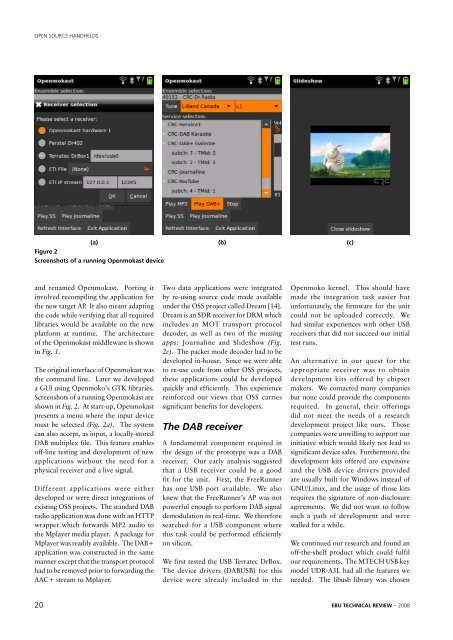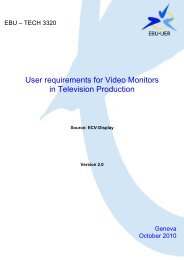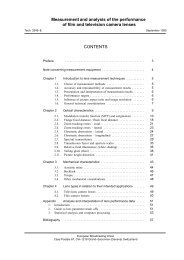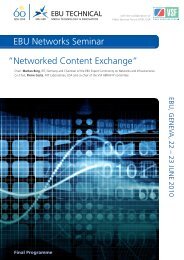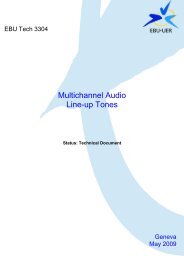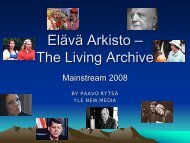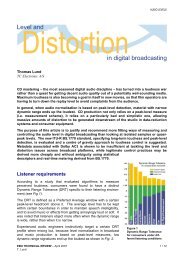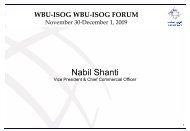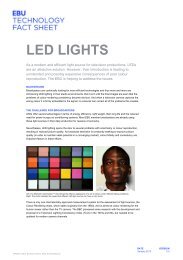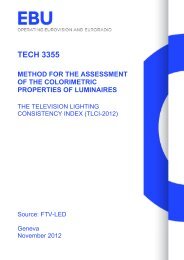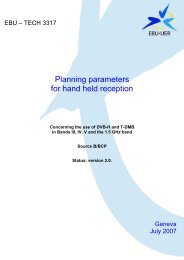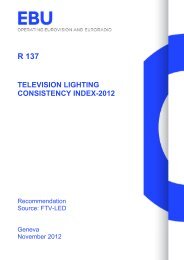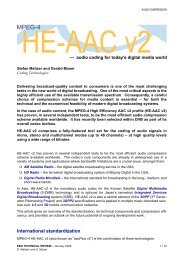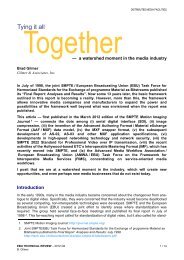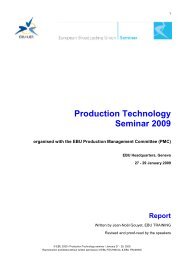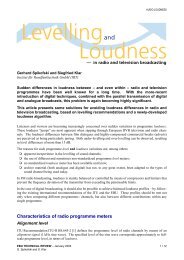Create successful ePaper yourself
Turn your PDF publications into a flip-book with our unique Google optimized e-Paper software.
OPEN SOURCE HANDHELDS<br />
(a) (b) (c)<br />
Figure 2<br />
Screenshots of a running Openmokast device<br />
and renamed Openmokast. Porting it<br />
involved recompiling the application for<br />
the new target AP. It also meant adapting<br />
the code while verifying that all required<br />
libraries would be available on the new<br />
platform at runtime. The architecture<br />
of the Openmokast middleware is shown<br />
in Fig. 1.<br />
The original interface of Openmokast was<br />
the command line. Later we developed<br />
a GUI using Openmoko’s GTK libraries.<br />
Screenshots of a running Openmokast are<br />
shown in Fig. 2. At start-up, Openmokast<br />
presents a menu where the input device<br />
must be selected (Fig. 2a). The system<br />
can also accept, as input, a locally-stored<br />
DAB multiplex file. This feature enables<br />
off-line testing and development of new<br />
applications without the need for a<br />
physical receiver and a live signal.<br />
Different applications were either<br />
developed or were direct integrations of<br />
existing OSS projects. The standard DAB<br />
radio application was done with an HTTP<br />
wrapper which forwards MP2 audio to<br />
the Mplayer media player. A package for<br />
Mplayer was readily available. The DAB+<br />
application was constructed in the same<br />
manner except that the transport protocol<br />
had to be removed prior to forwarding the<br />
AAC+ stream to Mplayer.<br />
Two data applications were integrated<br />
by re-using source code made available<br />
under the OSS project called Dream [14].<br />
Dream is an SDR receiver for DRM which<br />
includes an MOT transport protocol<br />
decoder, as well as two of the missing<br />
apps: Journaline and Slideshow (Fig.<br />
2c). The packet mode decoder had to be<br />
developed in-house. Since we were able<br />
to re-use code from other OSS projects,<br />
these applications could be developed<br />
quickly and efficiently. This experience<br />
reinforced our views that OSS carries<br />
significant benefits for developers.<br />
The DAB receiver<br />
A fundamental component required in<br />
the design of the prototype was a DAB<br />
receiver. Our early analysis suggested<br />
that a USB receiver could be a good<br />
fit for the unit. First, the FreeRunner<br />
has one USB port available. We also<br />
knew that the FreeRunner’s AP was not<br />
powerful enough to perform DAB signal<br />
demodulation in real-time. We therefore<br />
searched for a USB component where<br />
this task could be performed efficiently<br />
on silicon.<br />
We first tested the USB Terratec DrBox.<br />
The device drivers (DABUSB) for this<br />
device were already included in the<br />
Openmoko kernel. This should have<br />
made the integration task easier but<br />
unfortunately, the firmware for the unit<br />
could not be uploaded correctly. We<br />
had similar experiences with other USB<br />
receivers that did not succeed our initial<br />
test runs.<br />
An alternative in our quest for the<br />
appropriate receiver was to obtain<br />
development kits offered by chipset<br />
makers. We contacted many companies<br />
but none could provide the components<br />
required. In general, their offerings<br />
did not meet the needs of a research<br />
development project like ours. Those<br />
companies were unwilling to support our<br />
initiative which would likely not lead to<br />
significant device sales. Furthermore, the<br />
development kits offered are expensive<br />
and the USB device drivers provided<br />
are usually built for Windows instead of<br />
GNU/Linux, and the usage of those kits<br />
requires the signature of non-disclosure<br />
agreements. We did not want to follow<br />
such a path of development and were<br />
stalled for a while.<br />
We continued our research and found an<br />
off-the-shelf product which could fulfil<br />
our requirements. The MTECH USB key<br />
model UDR-A3L had all the features we<br />
needed. The libusb library was chosen<br />
20 <strong>EBU</strong> TECHNICAL REVIEW – 2008


